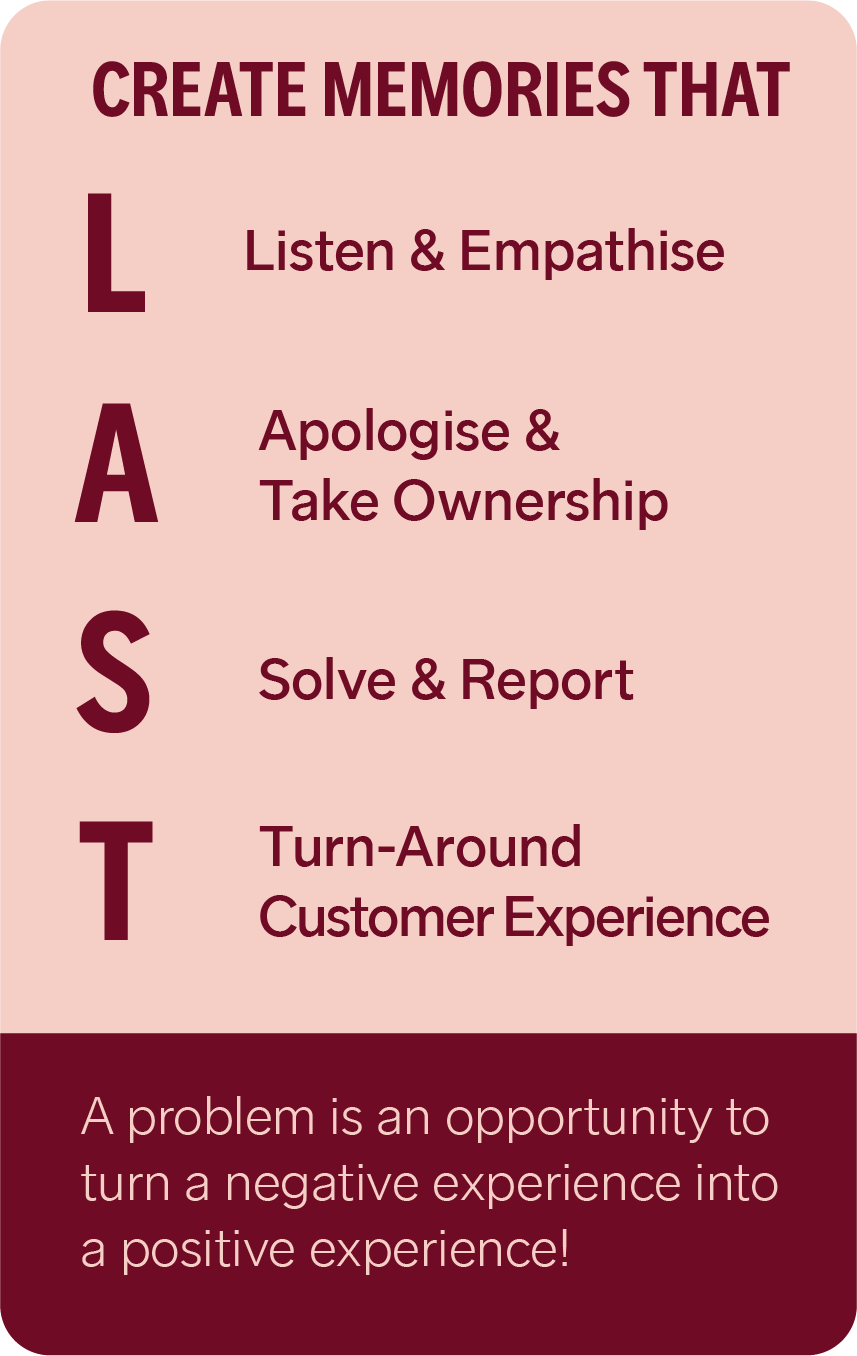SSMService Standard Manual
Service Tools
Service Tools
A problem is an opportunity to turn a negative experience into a positive experience!

Listen
- I listen to understand, not to respond.
- I use open body language to show interest in my customer.
- I use non-verbal communication to show I am listening and understand.
Empathise
- I repeat customers verbiage to show I understand, care and are wearing their shoes.
- I use empathy statements before I apologise to show that my care is genuine.
Empathy Statements
Customer said they are frustrated, an empathy statement would be:
- ’I understand your frustration, I would be frustrated too!’
Customer said they are angry, an empathy statement would be:
- ‘I understand your anger‘
Customer said they are unhappy, an empathy statement would be:
- ‘I understand why this makes you unhappy with us’
Can you think of more empathy statements?
Apologise
- I use a genuine tone and facial expression.
- I apologise using the appropriate language.
Take Ownership
- I ask for forgiveness where applicable / a chance to fix it.
- We want to make it right – we reassure our customer.
Solve
- I remember I am empowered up to £1, 000 – I match the crime with the punishment - e.g. I would not compensate with the cost of a cabin if the remote control is missing.
- I find a way to immediately solve the problem.
- I communicate the resolution steps with my customer (where the solve isn’t immediate, I find alternatives to turn the customer experience around).
Report
- I communicate the problem with my manager and team (we can then ensure we take extra special care of the customer together) and also focus together on ensuring the problem does not occur again.
Turn Around The Customer Experience
- My team and I ensure the rest of the customers journey with us is engaging – we build rapport and a solid relationship.
- I surprise and delight my customer, utilising Big Little Things and my empowerment up to £1,000.
